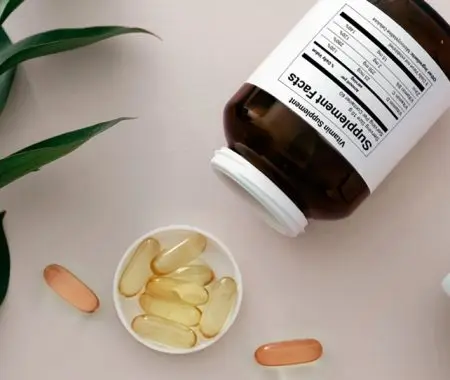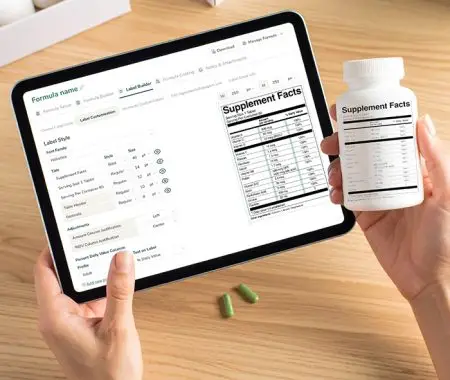If you are selling packaged food products, you will need to include a nutrition facts label on the packaging. This label must include information on the product’s calorie content, as well as its fat, saturated fat, cholesterol, sodium, carbohydrate, dietary fiber, and sugar content.
What are the steps to creating a nutrition facts label?
1. Calculate the nutritional value of your product:
To calculate the nutritional value of your product, you will need to gather information on the ingredients used and their proportion in the final product. This can be done by weighing each ingredient and calculating its nutritional content per 100 grams. Once you have this information, you can calculate the total nutritional content of your product using a simple formula.
To make things easy for you, Food Label Maker automatically calculates the nutritional value of each ingredient of your recipe when you enter the product’s name and serving size. In addition, you can hire one of our experts to help you create your nutrition facts label.
2. Follow the rules and regulations of food labeling:
When creating a nutrition facts label, it is important to follow the country’s rules and regulations for food labeling. This will ensure that the label is accurate and compliant with food labeling laws.
See How FoodLabelMaker Can Help You
What are the key points to keep in mind when creating a nutrition facts label?
- The label must be affixed to the packaging in a conspicuous place.
- The label must include the name and address of the manufacturer, packer, or distributor.
- The label must list the net quantity of contents in terms of weight, measure, or count.
- The label must declare the presence of any major food allergens present in the product.
- The label must state the serving size and number of servings per container.
- The label must list the calories per serving, as well as the total fat, saturated fat, cholesterol, sodium, dietary fiber, and sugars content.
- The label must indicate the percentage of Daily Value (%DV) for each listed nutrient.
- The label must include a “Supplement Facts” panel if the product contains certain vitamins, minerals, or other dietary ingredients.
And many more…
3. Design and Print your label
After completing the first two steps, you need to design your nutrition facts label as a final step to complete the work. Food Label Maker offers different types of designs for your label. With simple easy steps, you can choose the format, type, and design of your label.
With Food Label Maker, you can ensure that your food products are properly labeled and compliant with all relevant regulations. This will give your customers the peace of mind that they are making informed choices about what they eat.



